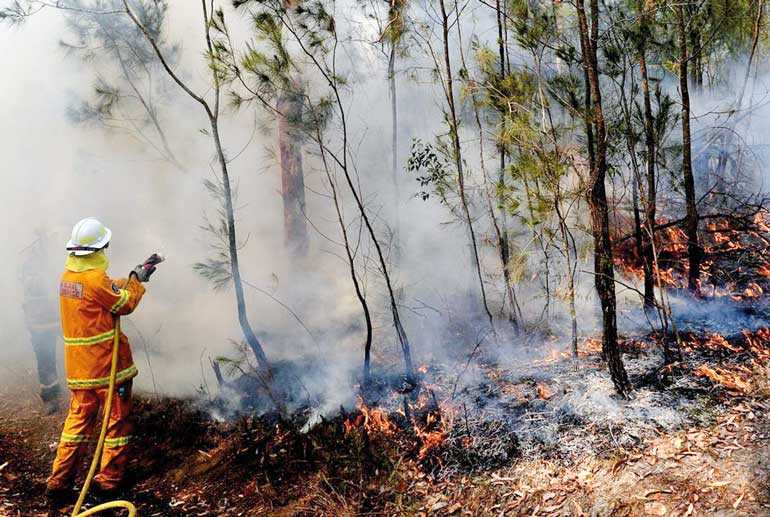Sunday Apr 20, 2025
Sunday Apr 20, 2025
Monday, 9 December 2019 00:13 - - {{hitsCtrl.values.hits}}

MELBOURNE (Reuters): Firefighters in eastern Australia used easing weather conditions on Sunday to bring bushfires under control ahead of forecast of soaring temperatures for next week.
There were 96 fires burning in New South Wales, home to Australia’s largest city of Sydney, with only about a half contained and more than 1,600 firefighters deployed to do back burning and create containment lines.
Sydney with its population of 5.2 million has been blanketed by unhealthy haze and smoke for weeks, with conditions worsening on Friday as several fires merged into a giant blaze that may take weeks to put out.
Australia has been through some devastating bushfires before during its hot summers, but fire officials have said that this earlier-than-usual wave of fires has been one of the most persistent and largest.
NSW Rural Fire Service Commissioner Shane Fitzsimmons told Australia’s ABC television on Sunday that temperatures will be raising to above normal by Tuesday, reaching 40 Celsius (104 Fahrenheit), threatening the spread of the fires and new blazes.
More smoke is to be expected around Sydney on Sunday as firefighters will do preventive work.
“Crews are going to be actively out there lighting up large tracts of land, kilometers of trails and tracks, and getting into bushland areas in an attempt to bring those fires under control and start putting it into consolidation with containment lines,” Fitzsimmons said.
The fires have been blamed on soaring temperatures, dry winds and arson and with much of the country under a long-lasting drought, Prime Minister Scott Morrison has been under pressure to address the impact of climate change.
In mid-November, 14 mayors of fire-stricken areas signed a letter urging the government to acknowledge a correlation between climate change and the devastating bushfires, asking also for more funds.
While some additional money has been provided, Morrison has repeatedly rejected any links between the fires and his conservative policies, including support for the coal industry.
On Saturday, the government issued a report suggesting that Australia is on track to meet its emission reduction target, which under the Paris Agreement calls for the country to reduce its emissions by 26-28% from 2005 levels by 2030.
The government acknowledged, however, that it uses so-called carryover credits, which allow for counting emissions reduction from the past toward future targets – a practice criticized by the European Union and Pacific countries threatened by climate change.